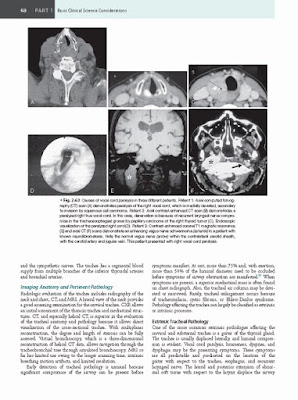by Carin A. Hagberg MD FASA (Author)
There have been significant advances in airway management over the past two decades and since publication of the third edition of Benumof andHagbergs Airway Management in 2012. It is essential that airway practitioners become familiar with the most recent developments in equipment and scientific knowledge to allow the safe practice of airway management.
In the fourth edition of Airway Management, six new chapters were added, including: (1) Development of an Airway Management Plan, (2) Techniques to Induce General Anesthesia, (3) Airway Management in Nonoperating Room Locations, (4) Airway Research, (5) Airway Management and Outcomes Reporting, and (6) Role of the Airway Community. Nine chapters have either have been merged with others or deleted.
The remaining chapters were substantially updated in an attempt to address current thinking and practice. To aid the reader in understanding and retaining complex and detailed information, video recordings, which illustrate the use of most of the different airway devices and techniques currently available to the clinician, accompany this edition. Also, each chapter includes a summary; up to a dozen bulleted, concise clinical pearls; and selected references.
The basic structure and philosophy of the book have not changed. It is divided into seven parts. The first section (Chapters 1-7) provides basic clinical science considerations of airway management. The second section (Chapters 8—11) presents the development of an airway management plan, as well as global airway algorithms. The third section (Chapters 12—15) emphasizes patient preparation and preintubation ventilation procedures, as well as techniques for induction of general anesthesia. The fourth section (Chapters 16 — 30) covers the wide variety of techniques and devices used for airway management. The history of airway management is reexamined, and the many new airway devices and techniques are detailed. The indications for and confirmation of tracheal intubation are provided. The fifth section (Chapters 31 — 44) covers management of difficult airway situations, such as in pediatric patients, in the intensive care unit, and in nonoperating room locations including radiology and gastroenterology, which are rapidly growing areas of anesthetic practice. The sixth section (Chapters 45 — 49) emphasizes postintubation procedures and discusses issues such as monitoring the airway, extubation, and complications of airway management. The seventh and last section (Chapters 50 — 55) presents societal considerations of airway management, including airway education, clinical documentation of airway management, conduction of airway research, airway management and outcomes reporting, and the role of the airway community.
The editors of this book are often asked by family, friends, or colleagues with a limited understanding of airway management, “Why does one need an entire textbook dedicated to putting in a breathing tube?” A glance at the table of contents of this book can begin to provide clues; however, a short answer is that airway management is a complex skill with multiple variables, a very short time limitation, and life-or-death consequences. Airway practitioners must possess a great deal of knowledge and proficiency in order to save a patients life when difficulty is encountered.
Improvements in airway management have led to a documented decline in the incidence of airway-related preoperative morbidity. Much of this has been because of the development and widespread implementation of devices designed for management of the difficult airway. Because of the plethora of these devices already available and the fast pace at which new ones are introduced, airway practitioners need to understand the fundamentals of the practice of airway management in order to optimally utilize the available technology. This book covers in detail the anatomy, physics, and physiology of which mastery is necessary in order to use these devices to their full potential. It is imperative to understand not only the techniques associated with the various airway devices, but also when their use would be most appropriate in a given situation.
As with many clinical skills, information and study will only go so far in achieving proficiency. It is essential to have experience with various clinical situations techniques in order to develop expertise. However, because most airways are managed without difficulty, there are limitations to experience when discussing airway management. An in-depth understanding of the concepts presented in this text are vital to the successful management of an encountered difficult airway scenario. Expertise also entails ongoing learning, skill maintenance, simulation, and self-assessment—all of which are aided with the use of this book.
We are most fortunate to five in this unprecedented era of safe anesthesia practice and should continue to look forward to the future advances that will continue to occur and what research on airway management will unfold. The contributors to this book will undoubtedly be central to this progress, and we look forward to working with them in future editions.
Product details
- Publisher : Elsevier; 4th edition (December 20, 2017)
- Language : English
- Hardcover : 1000 pages
- ISBN-10 : 0323428819
- ISBN-13 : 978-0323428811
- Item Weight : 5.8 pounds
- Dimensions : 8.3 x 1.5 x 11.1 inches







No comments:
Post a Comment